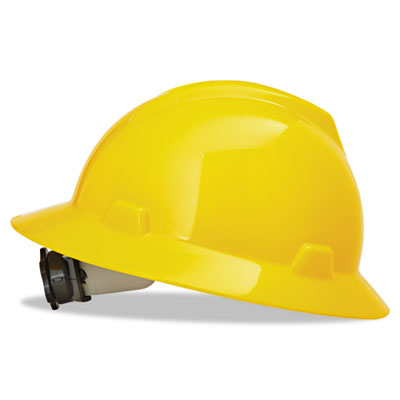Ensuring the safety and welfare of workers is one of the first priorities of a construction company owner. To prevent accidents and ensure a steady flow of work, all major construction safety supplies is essential. If you are engaged in the construction industry, then you must be well aware of the dangers that your workers are exposed to, on a daily basis. A major injury to the head at the construction site can prove to be fatal for any worker. Therefore, hard hats are one of the construction safety products that you should invest in.
These helmets will protect your workers from the risks of injuries caused by falling objects. The USP of hard hats lies in the fact that they are designed to minimize electric shock hazards. The electro-protective classifications of helmets has been divided into three types- Class G(general)helmets, Class E(electrical helmets) and Class C(conductive) helmets by the American National Standards Institute(ANSI). General helmets are specifically designed to reduce the risk of contact with low-voltage conductors. They come with a proof testing of 2,200 volts. Electrical helmets, on the other hand, are designed to reduce contact risks with conductors at higher voltages. They have a proof testing of 20,000 volts. Conductive helmets, however, do not provide any protection from electrical hazards.
So what criteria should you use to select hard hats? Every hard hat that confirms to the requirements of ANSI Z90.1-2014 needs to be properly marked for its compliance. Therefore, only opt for the ones that come with the manufacturer’s name, date of manufacture, type and class designation, approximate head size range and the legend, ‘ANSI Z89.1-2014’’.
One common notion that most people have about hard hats is that they come with a predetermined service life, which is not the case. All components of these construction safety supplies need to checked regularly for signs of cracks, dents, penetration and damage due to rough treatment, impact or wear and tear that might compromise on the degree of protection which they offer. UV radiation can also pose a major problems for the ones that are made from plastic. You can easily check the damage caused by UV radiation. The hat will lose its glossy finish and look chalky. More degradation can cause the flaking of the shell. Therefore, reject a helmet with damaged or defective parts.
Occupational Safety and Health Administration(OSHA) suggests that employers should allow workers to use only one liner that are designed to be compatible with protective properties of the hard hats, especially during the winter. OSHA also suggests that a construction firm owner should contact the hard hat manufacturer to find out if any liner or garment is suitable for use with it. So, to avert accidents at construction sites opt for hard hats.
To Know More Please Visit: Texas Safety Supply
